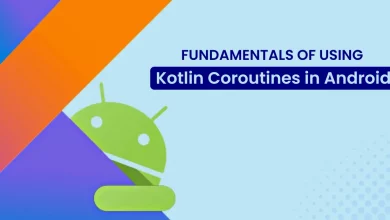What is a Progressive Web Apps? PWA Guidance for Beginners

In recent years, there has been a newcomer in the world of mobile development, it is the Progressive Web Apps, an application that can be read on a browser and which has more advantages than a traditional mobile application.
What is a Progressive Web Apps?
A Progressive Web App combines web technologies (HTML, CSS, JavaScript) and the functionalities of a native application (push notifications, full-screen vision, geolocation, etc.).
It is mobile-first, readable from a browser, has a URL and it is responsive on all screens (mobile, tablet, PC).
Today the PWA represents a real cross between web apps (Hotmail, Google Drive) and the mobile website.
Google, via Android, was the first to sniff out the PWA vein. In fact, it is gradually making all the features of native applications available to PWAs and has been doing so for a few years now.
They are now endowed with many advantages but also the best of native applications (push notifications, icons, full-screen mode).
Note, however, that iOS was not as fast as Android in providing PWAs with native features on its system.
It is, therefore, catching up at the moment, by supporting them better and better with each update, with progress almost every month.

How Do Progressive Web Apps Work?
To begin with, progressive web apps use a script called “Service Workers”, which will give access to features such as sending push notifications, updating content in the background, or even offline use.
The PWA stores HTML files, CSS files, and images in the browser cache, giving developers full control over the network call.
Based on an “App Shell” model, it provides an envelope of the basic UI before the data is put in place.
We, therefore, separate the content and the structure of the application to save loading time.
Finally, it uses a “manifest.json”, a file that allows it to create a shortcut on the home page from the browser, and no longer after installation from the Store!
This manipulation is easily done on Android, while on iOS you have to trick a little or pin your site.
You should know that iOS has made a lot of effort recently to integrate PWAs.
Indeed, the operating system offers, for example, much more access to the tools of the smartphone (geolocation, gyroscope) and improves the user experience.
The functions of the “manifest” do not stop there since it allows to make a more native aspect to the application via the possibility of turning the screen, carrying out a display without an address bar, or of change the color.
Finally, together with these files, we can code your Progressive Web Apps like a classic website, with HTML, JavaScript, and CSS.
Advantages of Progressive Web Apps
- We don’t need to install a PWA, we access it via its URL. You can put the icon of a PWA as a shortcut on the home page of a phone from the browser without having to install it.
- PWA saves money because it is only developed once, while a native app needs to be developed for Android and iOS.
- Thanks to its partial caching, the user does not re-download it every time they use it.
- In the absence of a download, the PWA only uses a very limited portion of the phone’s memory.
- The PWA has SEO! And yes, thanks to its URL, it is referenced by Google, so it is SEO-friendly.
- It can be used without an internet connection.
- It is secure (HTTPS), and responsive (PC, Tablet, Laptop).
Disadvantages of Progressive Web Apps
- Its absence on mobile blinds
- Among browsers, Chrome performs well, but others take a long time to adapt to PWA
- The offline data storage limit is 50MB maximum
- Despite its many features, it offers limited possibilities in terms of UX and UI, especially in 3D (no access to Bluetooth, Touch ID, Face ID, NFC, etc.)
The Revenge of Native Apps Development Against PWAs
You are probably wondering why a company should choose a Progressive Web Application rather than a “Native Application”. Many also wonder if PWAs will ever come to replace them.
Unlike PWAs, native apps are written to run on mobile devices, not in a web browser.
They are developed with Objective-C and Swift languages for iOS and Java for Android.
While longer and more expensive to develop (because of the development of separate versions for the 2 platforms), native applications are however more secure, running under HTTPS. A guarantee of confidence for the user!
They can interact with each other (for example by offering their users to connect via Facebook) and provide a better user experience.
They also offer solutions lacking in PWAs such as access to Apple services (Example: in-app payments), Siri integration, access to information (Touch ID, Face ID, etc.).
The native application also allows you to use many more features than the Progressive Web Apps, for Example, geofencing which consists of sending a notification when approaching a geolocated point.
Like the PWA, the native app is a good solution to provide a seamless experience for users.
The choice between the two should be made according to the objectives and resources of your project.
The native developer has certainly lost some market share, but is not about to disappear!
It will now have to redouble its efforts to compete with PWAs, on more advanced applications, by seeking the latest features that PWAs do not yet support.

Conclusion
Thanks to its URLs, loading speed, functionalities, and its mobile design, the PWA seems to be the future of applications.
And for proof “Twitter Lite”, which implemented a PWA for its mobile experience, saw its bounce rate drop by 20% and its number of tweets increase by 75%.
Others have also had this initiative, such as Tinder, Pinterest, or Lancôme.
In view of these good results, browsers and other platforms have recently made a lot of efforts to support and add more and more features to PWAs, so it is a technology that is evolving and that could, in time, supplant the application market.
If you are looking to leverage on PWAs, connect with us. OneClick IT Consultancy is a leading progressive web apps development company in the USA and Europe which was helped many clients gain a competitive edge with their projects.





